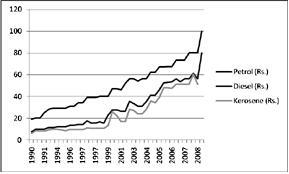Together they form the basis of what is often called "hidden hunger," the deforming element of malnutrition that stunts children's growth and can dramatically shorten the lives of youngsters and pregnant women throughout much of Africa and southeast Asia.
The other surprise was that the person advocating the investment is a Canadian: Susan Horton, an economics professor at Wilfrid Laurier University in Waterloo, Ont., who has been involved with Third World nutrition issues since a graduate-student stint at Bangladesh's International Centre for Diarrheal Disease Research about 30 years ago.
Her plan: An investment of $347 million a year over five years to scale up the delivery of vitamin A, iron and iodine, and to add zinc and folic acid to the majority of diets in sub-Saharan Africa and much of Asia. She believes the result would be an estimated $5 billion in health-care savings and future earnings — and saving something in the order of 3.5 million lives.
The Copenhagen Consensus for 2008 lists that micronutrient supplements for children (vitamin A and zinc) as the top most solvable (based on what produces the biggest bang for a buck) problem for this year. Every dollar spent on micronutrients would generate a $17 return in health and productivity costs, which is far greater than investments in global warming or counterterrorism, which require enormous amounts of public money to make even a modest amount of headway. The top ten problems in the list are micronutrient supplements for children (vitamin A and zince), the Doha development agenda, micronutrient fortification (iron and salt iodization), expanded immunization coverage for children, biofortification, deworming and other nutrition programs at school, lowering the price of schooling, increase and improve girls' schooling, community-based nutrition promotion, and provide support for women's reproductive role.
Why doesn't aid work in sub-Saharan Africa?
Unsolved problems in economics
- What caused the Industrial Revolution?
- What is the proper size and scope of government
- How can heterogeneous production goods be included in a mathematically tractable intertemporal equilibrium constrution?
- What caused The Great Depression?
- The Equity premium puzzle
- How is it possible to provide causal explanations using the purely logical constructions of mathematical economics?
- Futures contract model
- What is the microeconomic foundation of inflation?
- Is the money supply endogenous?
- How does price formation occur?
- What causes the variation of income among ethnic groups?
A fiasco named NOC (a good article about sorry state of state-run Nepal Oil Corporation and the perennial short supply of oil, even when subsidies are scrapped and prices upped multiple times. What's the secret: corruption, political infringement in management decision, poor governance, and poor accountability)

Large cardamom export touches new record (Nepal is the largest exporter of large cardamom. This product has been identified as having the highest export potential. I don't understand why the policymakers are neglecting this particular product rather than actively promoting its production in the country. Nepal has already squandered decades promoting garment and textile sector. Sadly, the same sector is now reeling under sustained recession (I say the Great Garment Depression of 2005/06 in Nepal) chiefly because of slacking competitiveness of Nepali products and production efficiencies fostered by subsidies and duty free access in the West until the end of MFA in 2005)